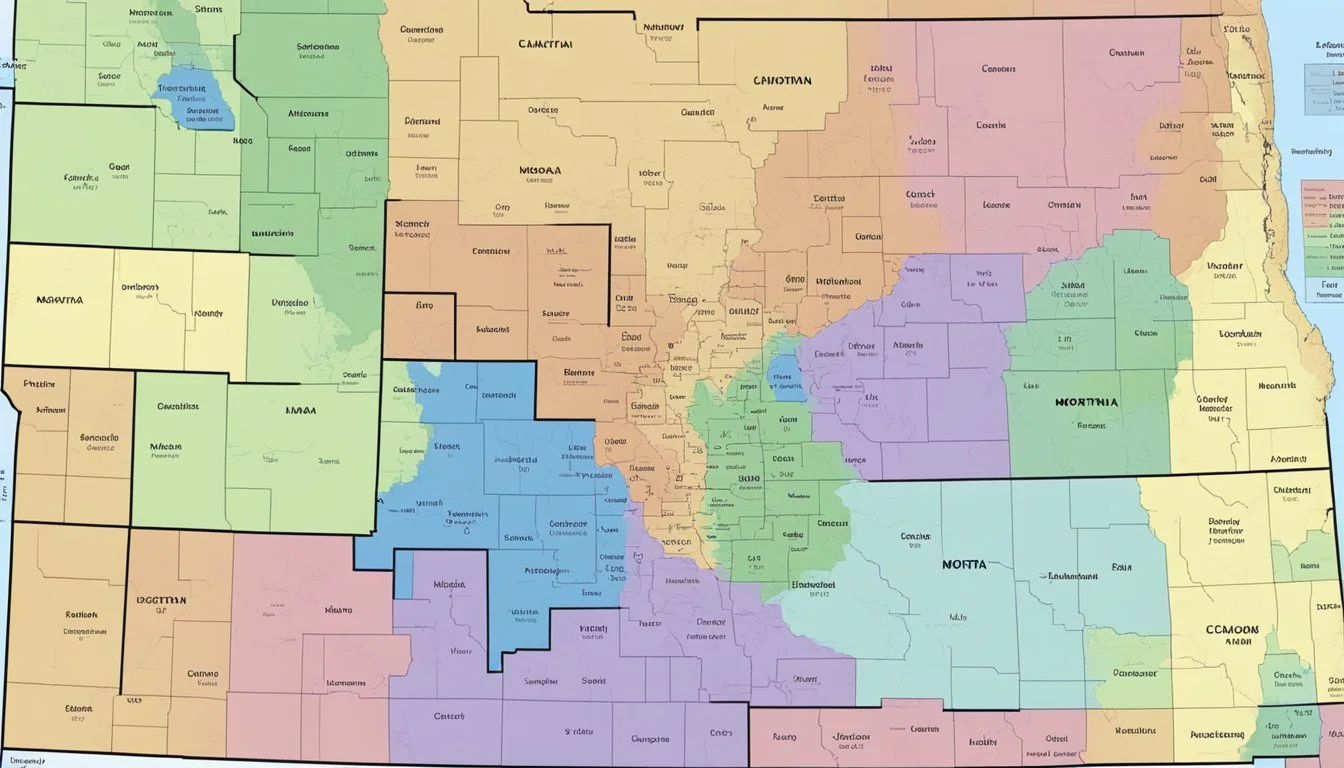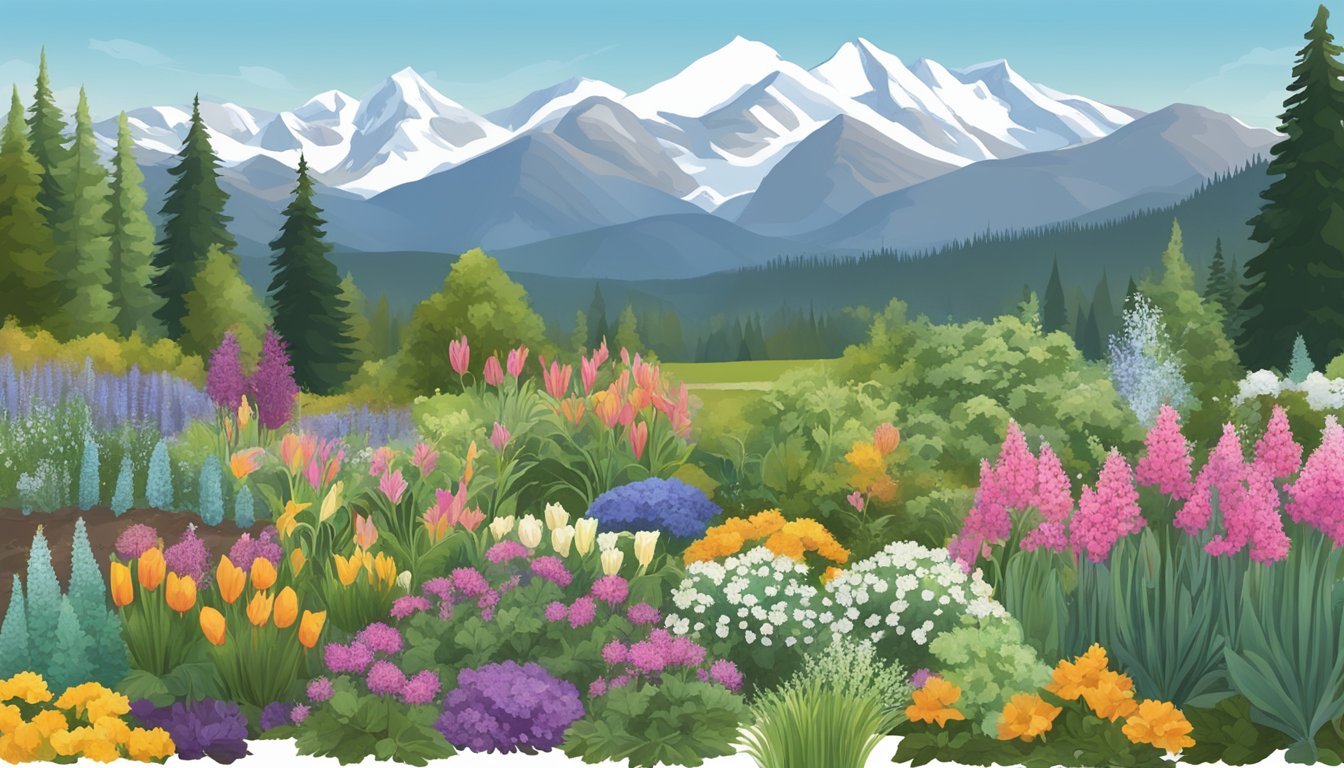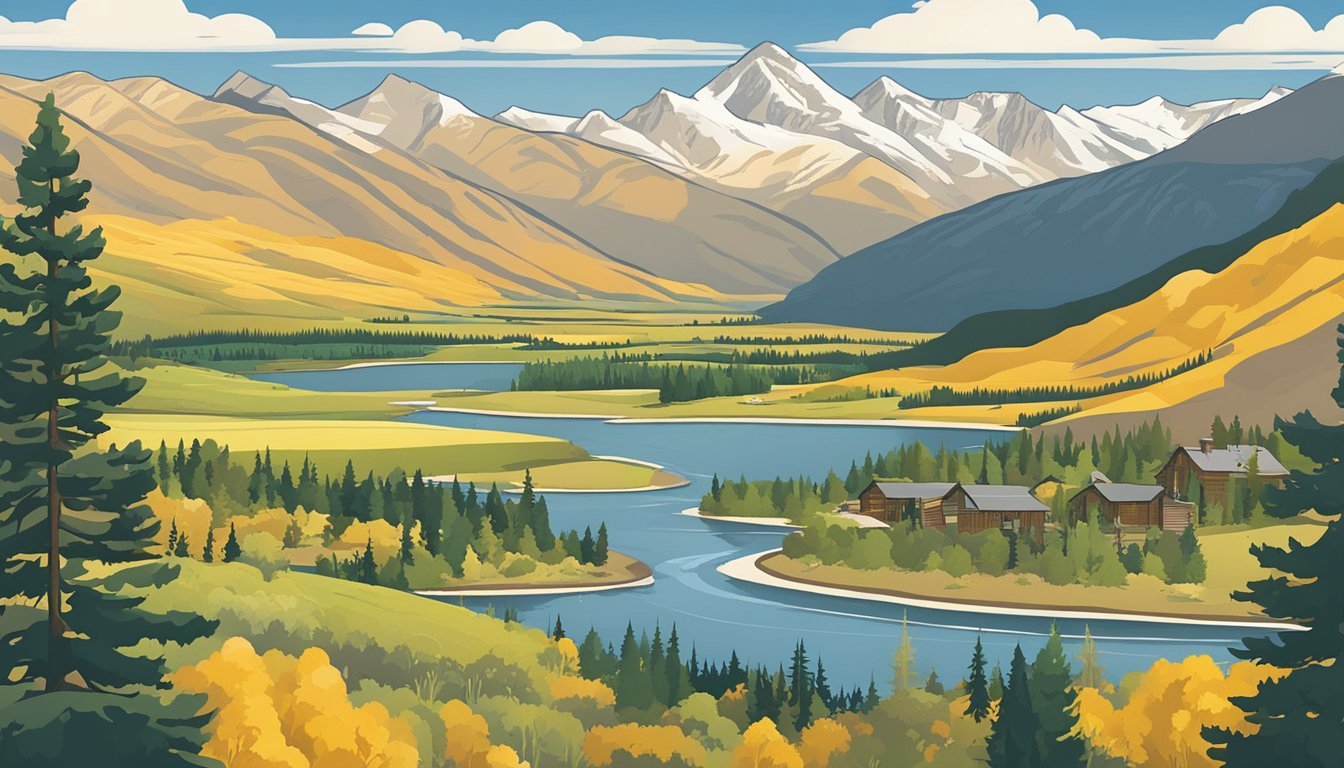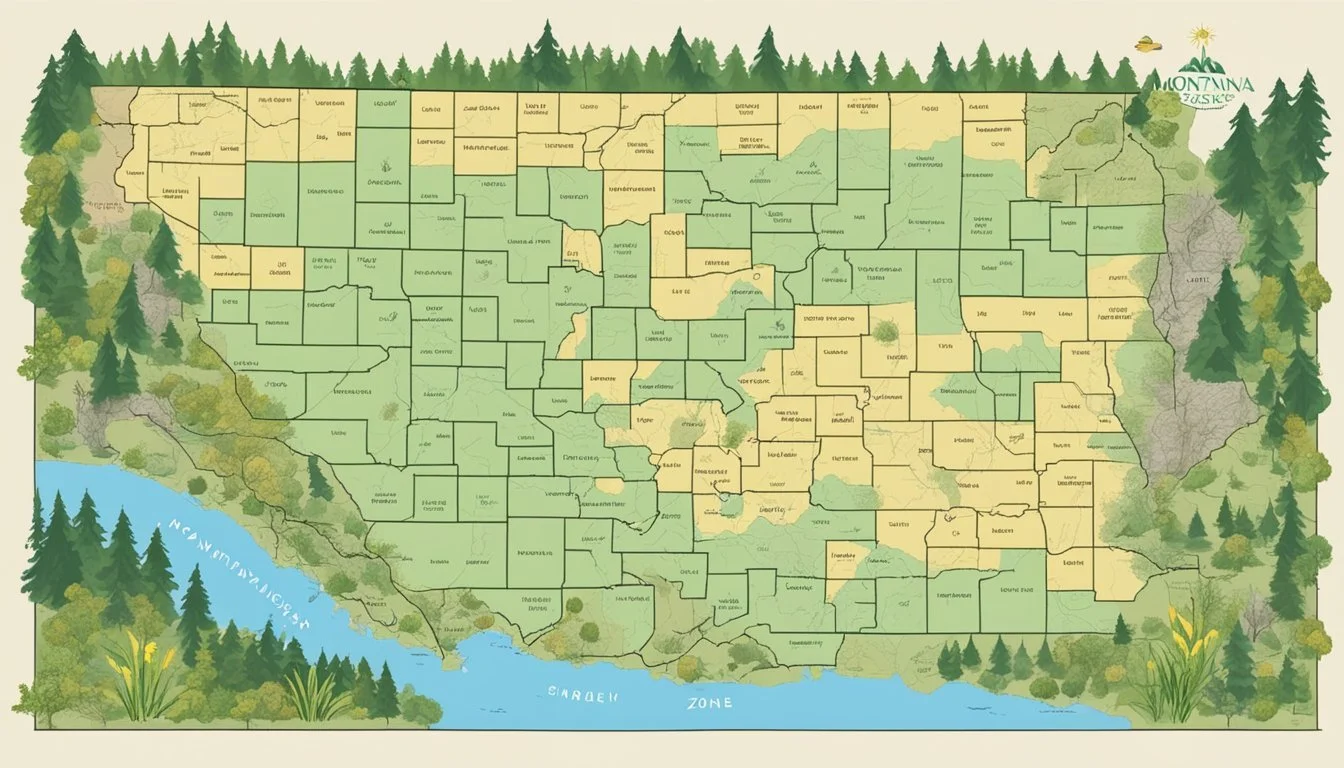USDA Hardiness Zones in Montana
Navigating the State's Growing Climates
Gardeners and growers rely on tools like the USDA Plant Hardiness Zone Map to make informed decisions about planting and cultivating a successful garden. This map delineates regions based on the average annual extreme minimum winter temperatures into 10-degree Fahrenheit zones and 5-degree Fahrenheit half zones, providing a framework for understanding what plants can thrive in a given location. It is a crucial reference for selecting the right perennials that are most likely to survive and flourish in the climate conditions specific to an area.
Montana's varied geography and climate contribute to a range of hardiness zones within its borders. Understanding these zones is key for anyone looking to cultivate a garden or manage landscapes in the state. From the frigid temperatures in the mountain regions to the warmer valleys, Montana encompasses USDA hardiness zones that span from 2b, with winter temperatures dipping as low as -45°F, to milder climates like zone 6b. The diversity of these zones calls for a meticulous selection of plants that are suited to withstand the state's lowest temperatures.
The latest 2023 USDA Plant Hardiness Zone Map reflects years of climatic data collection and analysis, offering a refined tool for Montana's agricultural community. As the state spans a considerable latitudinal range and features significant altitude variations, the updated map is an essential guide for local gardeners seeking to optimize their plant selections for long-term growth and sustainability.
Understanding USDA Hardiness Zones
The United States Department of Agriculture (USDA) Hardiness Zones provide a standard to help gardeners recognize the plants best suited to withstand the local climate, particularly the average annual extreme minimum winter temperature.
USDA Zones Explained
The USDA Plant Hardiness Zone Map divides North America into 13 separate zones. Each zone is a 10-degree Fahrenheit band, further split into A and B sections representing 5-degree Fahrenheit differences. Montana's landscape features zones ranging from 2b through 6b, reflecting a broad spectrum of climatic conditions suitable for various plant life. The specific designation of each zone equips gardeners with the knowledge of what plants will thrive in their area.
The Significance of Zones for Gardening
USDA zones play a critical role in gardening by guiding plant selection. The zone information implies the lowest temperatures that a plant can likely endure. When a gardener in Montana selects a plant rated for their specific zone, they can feel confident that the plant has a good chance of surviving the winter. For instance, a plant hardy in zone 4a would resist temperatures down to -30°F to -25°F. It's essential for Montana gardeners to reference the USDA Hardiness Zone Finder to ensure that their garden is composed of plants matched to their zone's unique temperature profile.
Montana's Climate and Plant Hardiness
Montana's diverse climate significantly affects its gardening landscape, with USDA Hardiness Zones ranging from 3a to 6b. This reflects the considerable variation in winter temperatures experienced across the state.
Climate Overview
Montana's climate can be broadly categorized as continental, characterized by cold winters and warm summers. However, regional variations are profound due to the state's topography, which includes mountains and plains. Winter temperatures can plummet below 0°F, especially in the northern and central regions, while summers can bring highs well into the 80s°F.
Hardiness Zones in Montana
The concept of Hardiness Zones was created to assist gardeners and growers in identifying the most likely to thrive plants based on local climate conditions, particularly minimum winter temperatures. For Montana, hardiness zones vary extensively:
Northern Montana: Predominantly in zones 3a to 4b, where the winter temperature can fall as low as -40°F.
Central and Eastern Montana: Generally found within zones 4a to 5b, with winter temperatures ranging between -30°F and -15°F.
Western and Southern Montana: This region encompasses zones 4b through 6b, experiencing milder winter temperatures that usually do not drop below -5°F.
The precise Montana Hardiness Zone can be determined by referencing the USDA Plant Hardiness Zone Map, which takes into account the average annual extreme minimum winter temperature for a specific location. It is an essential tool for gardeners in Montana to understand what plants will tolerate their region's winter conditions.
Navigating the USDA Plant Hardiness Zone Map
The USDA Plant Hardiness Zone Map is a critical tool provided by the U.S. Department of Agriculture that guides Montana gardeners in selecting plants that will succeed in their climate. It divides regions based on their average annual minimum winter temperature.
Accessing the Map
To access the map, one can visit the USDA's official website and locate the interactive GIS (Geographic Information System) tool. The interface allows users to view the map at a national level or zoom into specific regions. For a location-based search, users can utilize the ZIP code feature to pinpoint their exact gardening zone.
How to Use the Map for Montana
Understanding how to interpret the map is vital for Montana planters. Each zone is delineated by a 10-degree Fahrenheit range and further divided into 'a' or 'b' to provide a 5-degree Fahrenheit buffer, indicating smaller subzones. In Montana, for instance, zones can range considerably, so identifying the precise zone for one's location is essential for informed planting. Gardeners can use this information to determine the plants most likely to thrive in their specific Montana climate.
Plant Selection for Montana's Gardeners
Gardeners in Montana must carefully select plants suited to the state's varied USDA Hardiness Zones. The right plant choices are crucial for garden success across Montana's diverse climate regions.
Choosing the Right Plants
When selecting plants for a Montana garden, it is vital to consider the specific USDA Hardiness Zone of the area. Montana features zones ranging from 2b to 6b, indicating significant temperature variances. For instance, a plant hardy in Zone 6b may not survive the colder conditions in Zone 4a. Gardeners should reference the interactive Montana USDA Plant Hardiness Zone Map for precise guidance.
Zone 2b: Hardy plants that tolerate extreme cold, such as Siberian iris or Carpathian harebell.
Zone 3a and 3b: Cold-resistant species including peony varieties and several conifers.
Zone 4a and 4b: A wider selection is available, such as common lilac and American cranberry bush.
Zone 5a and 5b: Suitable for many fruit trees and ornamental shrubs.
Zone 6a and 6b: Allows for cultivation of some warmer climate perennials like certain rose varieties.
Considerations for Perennial Plants
Perennial plants are a mainstay in Montana gardens due to their ability to survive winter and return for multiple seasons. When choosing perennials, growers must ensure the plants can withstand the average annual extreme minimum winter temperature specific to their region. The 2023 USDA Plant Hardiness Zone Map is an excellent tool for matching perennials with Montana's zones. Gardening enthusiasts might consider the following:
In colder zones (2b to 4b), opt for hardy perennials like daylilies and hostas.
For milder areas (5a to 6b), one can explore a broader range of perennials including lavender and hellebores.
Understanding the precise needs of perennials in terms of soil, water, and sunlight is also important beyond the hardiness zones. This knowledge allows for a thriving garden that can withstand the challenges of the Montana climate.
By selecting the appropriate plants for their specific hardiness zones, Montana gardeners and growers can enjoy lush, resilient gardens that reflect the beautiful variety of the state's landscape.
Regional Variations in Hardiness Zones
Montana exhibits a diverse range of USDA Hardiness Zones due to its varied topography, which influences local climate conditions significantly.
Variability Within Montana
Within the state of Montana, hardiness zones vary widely, ranging from Zone 2b in the high, mountainous regions to Zone 6b in some of the state's lower elevations. This variability affects the types of plants suitable for growth in different areas. For example, a gardener in Zone 2b might select hardy perennials that can withstand extreme cold, while another in Zone 6b might have a broader range of ornamentals and fruit trees from which to choose. It is crucial for local gardeners and agricultural producers to understand the specific hardiness zone for their region to make informed planting decisions.
Understanding Half Zones
The USDA Hardiness Zone Map's resolution further refines each zone by dividing it into "A" (colder) and "B" (warmer) half zones. These half zones represent a 5-degree Fahrenheit difference in the average annual extreme minimum temperature. For instance, Montana's Zone 4a experiences lows of -30°F to -25°F, while Zone 4b experiences slightly milder lows of -25°F to -20°F. Gardeners should note that this increased resolution allows for more tailored planting strategies, even within short distances.
Technological Tools for Gardeners
Gardeners now have access to sophisticated tools that enhance their understanding of plant hardiness zones, particularly as they pertain to specific locations such as Montana. These tools have transformed the precision with which one can approach gardening in different climate conditions.
GIS in Hardiness Zone Determination
Geographic Information Systems (GIS) technology plays a critical role in the determination of hardiness zones. The integration of GIS enables researchers and horticulturists to analyze environmental data at high resolution, leading to more accurate hardiness zone maps. For gardeners, this translates to a greater ability to predict plant survival rates by area. GIS helps delineate zones based on comprehensive climatic data, which includes temperature extremes relevant to plant growth and survival in various regions.
Advancements in Zone Mapping
Recent advancements in zone mapping technologies have allowed for an enhanced interactive experience when utilizing plant hardiness zone maps. The newer maps provide a user-friendly interface where gardeners can zoom into their specific location, revealing precise zone demarcations. The improvement in resolution and usability of this technology greatly benefits those planning their gardens, as they can obtain information tailored to even a small area within a larger region, making gardening plans more precise and efficient. Accessing updated maps, such as the 2023 Montana Hardiness Zone Map, introduces a level of detail previously unavailable, ensuring gardeners can select plants suited to their exact gardening conditions.
Practical Gardening Tips
Montana's diverse climate presents unique challenges to gardeners and growers alike. When selecting plants, one must consider the USDA Hardiness Zones, which demarcate areas based on their expected minimum winter temperatures. For sound gardening practices, beginning with an understanding of your specific regional zone is imperative.
In regions categorized under zones 3a to 6b, gardeners should opt for perennial plants that can survive the cold winter temperatures characteristic of Montana. For example, in areas falling within zone 5a or zone 5b, selecting plants that can tolerate temperatures as low as -20°F will be essential.
Early March: start seeds indoors for crops like broccoli and cabbage.
Late March: plant hearty greens such as kale directly into the garden.
Warm-Season Crops:
After the last frost: sow seeds for tomatoes, peppers, and corn.
Soil preparation is also crucial. Gardeners should enhance their soil with compost to provide adequate nutrition for plants. Additionally, mulching helps to regulate soil temperature and retain moisture.
Month: March
Task: Start cold-season crops indoors
Month: April
Task: Prepare soil with compost and mulch
Month: May
Task: Transition to planting warm-season crops post-frost
To mitigate the effects of fluctuating temperatures, growers are advised to use protective coverings or cold frames, especially during the unpredictable spring and fall seasons.
By understanding their region's USDA Hardiness Zone and preparing accordingly, Montana gardeners can create a thriving garden resistant to the challenges posed by the local climate.
Select Cities and Their Hardiness Zones
Understanding the USDA Hardiness Zones is crucial for Montana gardeners and farmers when choosing plants that are likely to thrive in their area. Each zone is defined by the average annual extreme minimum temperature.
For example, Absarokee is in Zone 4a, indicating that the temperature can reach as low as -30°F to -25°F. Moving over to Alberton, gardeners will find themselves in Zone 5b, with minimum temperatures ranging from -15°F to -10°F. In Alder, the hardiness zone is a slightly cooler 5a.
The more northeastern location of Alzada places it within Zone 4a, similar to Absarokee, whereas Amsterdam aligns with Zone 4b. The historical mining city of Anaconda also shares Zone 4b. Further up north, Antelope sees temperatures bottom out in Zone 3b.
Small towns like Arlee and Ashland fall into Zones 5b and 4a respectively, showing diversity even among neighboring areas. Unlike the slightly warmer Augusta, which is in Zone 4b, Avon experiences similar conditions as Arlee, being in Zone 5b.
Big Timber and Bigfork, despite their geographical proximity, differ slightly with Big Timber in Zone 4b and Bigfork in 5b. The state's largest city, Billings, falls into the milder Zone 5a, which can be compared to Bozeman, another economic center that is also in Zone 5a.
It's valuable to highlight that Butte, with its higher elevation, is in the cooler Zone 4b. Each of these locations illustrates the varying climatic conditions across Montana, emphasizing the importance of recognizing the specific hardiness zone when planning for successful plant cultivation.
Frequently Asked Questions
Understanding USDA hardiness zones is key for Montana gardeners to select plants that will thrive in their specific locale.
What are the range of USDA hardiness zones found in Montana?
Montana encompasses a variety of climates captured in USDA hardiness zones ranging from 2b to 6b.
How can I determine the specific planting zone for my location in Montana?
Individuals can locate their specific Montana planting zone by referring to the interactive USDA Plant Hardiness Zone Map tailored for Montana.
Which plants are suitable for cultivation in Montana's climate zones?
Plants suitable for cultivation vary by zone, but the Montana USDA growing zones are primarily conducive to plants that can withstand cooler temperatures.
How do USDA hardiness zones vary across different regions of Montana?
USDA hardiness zones in Montana vary significantly, with colder zones in the mountainous regions and warmer zones found in the state's valleys.
What resources are available for understanding Montana's USDA hardiness zones?
Resources such as the official USDA Plant Hardiness Zone Map provide detailed information to understand and utilize Montana's hardiness zones.
How have the USDA hardiness zones in Montana changed in recent years?
The USDA hardiness zones in Montana, like many other areas, have been updated to reflect data collected over recent decades, indicating slight shifts in climate patterns.









